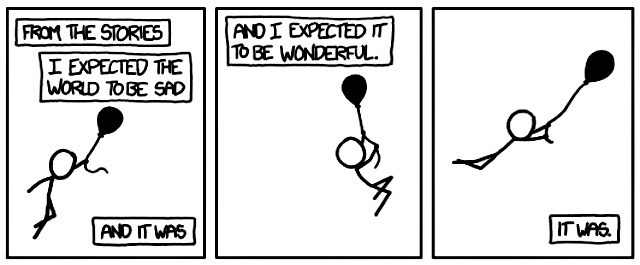Interactive Narratives Spring 2017
Course Objective
What happens when narrative becomes interactive? How can journalists harness new technologies in communicating a story's essence? This class will explore these concepts in-depth through discussions, readings and guest speakers, and provide practical lessons on understanding the new language of digital storytelling. Among the topics that we'll be investigating include virtual reality, animation in video, motion graphics, digital news packages, interactive documentaries, mobile and wearable platforms, Internet of Things (IoT), and more.
In this class, students will think critically about digital spaces as platforms for packaging media. They will study how to combine different media forms into cohesive narratives. One must consider the nature of each medium — the cognitive load, the learning curve, the various senses it stimulates — then understand how to combine these into narrative forms (both linear and non-linear) to deliver maximum impact.
Note: This is not a production course so there won't be any outside reporting assignments. This is by design to allow time to do work in other production-based New Media classes that are held the same time.
Final Assignment
For the final assignment, students will conduct at least one or more interviews with the reporters/developers/designers of an interactive package they pitch. Then they will turn in a one-page report about how the package was built. This report should give us a detailed summary about the project and answer several relevant questions such as: What is the story about? How was it designed? What are the different pieces of multimedia that compose it? What was the goal of the piece? In which ways does the design influence the story (or vice versa)? What was the workflow process of building this project? What were the challenges in reporting and building it? How was the idea initially conceived? How long did it take to report and build? When was design and development brought in? How did the final presentation of the project influence the reporting? What were the implications of the story both among the public and within the newsroom?
Students will then present their work to the class. Each presentation will be 10 minutes with 5 minutes of Q&A
Assignments
The following assignments are listed in the course schedule:
- Several short homework assignments to find examples of projects discussed in class, and write a critique.
- A mid-term assignment to mock-up a fictitious story using various multimedia elements.
- A final project that consists of both a written report and presentation based on an interview with a web producer.
Assignments/Grading Procedures
There will be two assignments due in class: a mid-term and final project
| Attendance | 10% |
| Class participation/Homework Assignments | 35% |
| Final Project | 55% |
Instructors
Examples of Interactive Narratives:
These are some examples of Interactive Narrative digital news packages we will discuss in class:
- How does ‘Hamilton,’ tap rap's master rhymes to blur musical lines?
- After the Storm (Washington Post)
- Stowaways and Crimes Aboard a Scofflaw Ship (New York Times)
- Insomnia (NFB)
- Do Not Track (Independent Documentary)
Link to last year's course schedule and syllabus, which will differ somewhat this year in light of the evolving nature of the medium.
- Jan 26
- Introduction (Jrue) — This session will cover the core concepts underlying most of the class, understanding different media forms and how they communicate.
- Feb 2
- Evolution of the digital news package (Koci) — This session will cover the uncertain path of how the digital news package evolved over the years to become what it is today.
- Feb 9
- Facebook Panel, exploring content strategy (Guest speakers) — We will have a panel discussion of people at Facebook working as content strategists. They will talk about how Facebook approaches and thinks about content delivery in digital media.
- Feb 16
- Social Media (Koci) — This class will cover how social media intersects with storytelling, and the new role of journalists as both content creators and curators of information.
- Feb 23
- Google Tools (Guest - Samaruddin Stewart) — This will be a workshop style lesson on using Google Tools for interactive storytelling.
- Mar 2
- Immersive Storytelling (Koci) — This session will cover examples of immersive storytelling, i.e. interactive documentaries, or big edge-to-edge projects that are somtimes more like videos games.
- Mar 9
- Guest Speaker (Lam Thuy Vo) — This session will be a guest speaker, Lam Vo, who is a fellow at Buzzfeed Labs and has been working on various social media tools.
- Mar 16
- VR and 360 Video (Laki and Melissa) — Alumnae Lakshmi Sarah and Melissa Bosworth will join us to share ideas about Virtual Reality and 360 video.
- Mar 23
- Agile and Design Thinking (Jrue) — In this class we will discuss workflows for developing online news and the techniques that borrow heavily from Silicon Valley and the technology industry.
- Mar 30
- Spring Break — No class this week.
- Apr 6
- Design and Animation (Koci) — In this session we will talk design fundamentals as it relates to both the web and all forms of visual information.
- Apr 13
- Josh Williams from the New York Times — Josh Williams, multimedia editor from the New York Times, will show some work and talk about the elements that make strong digital story packages.
- Apr 20
- Final Presentations 1 — Final presentations will be given in class. Attendance is mandatory for everyone.
- Apr 27
- Final Presentations 2 — Final presentations will be given in class. Attendance is mandatory for everyone.
- May 4
- Final Presentations 3 — Final presentations will be given in class. Attendance is mandatory for everyone.
